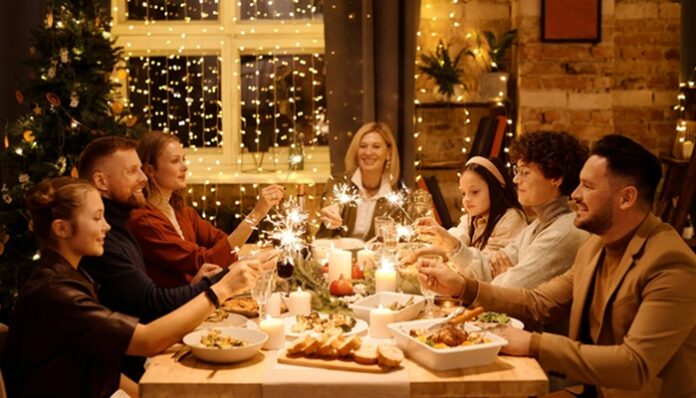
Yule is a festival celebrated by many cultures around the world, especially in the northern hemisphere. It is primarily associated with the winter solstice, which falls on December 21 or 22. Yule marks the longest night and shortest day of the year. It has been celebrated for centuries as a way to welcome the return of the sun and the promise of longer days. The origins of Yule can be traced back to ancient Germanic and Norse traditions. “Yule” comes from the Old Norse word “jól,” which refers to a midwinter festival. This festival was a time of feasting, drinking, merriment, and honoring and appeasing the spirits and deities associated with the winter season.
The Symbolic Yule Log
Traditionally, people would select a large log and bring it into the home or community gathering place. Then, they would decorate it with greenery, holly, and other festive elements before setting it ablaze. The Yule log was thought to bring good luck and protection from evil spirits and provide warmth during cold winter nights. Another important aspect is the exchange of gifts. This tradition has its roots in the Roman festival of Saturnalia, which was celebrated in late December.
During Saturnalia, people would exchange small tokens of good fortune to bring luck and prosperity in the coming year. Similarly, Yule became a time for giving and receiving gifts to spread joy and goodwill. In addition to feasting, gift-giving, and lighting the Yule log, many people also incorporate other customs and rituals into their celebrations. For example, some may decorate their homes with evergreen branches, mistletoe, and other symbols of fertility and rebirth.
Who celebrates Yule?
Yule holds great significance in many different traditions. One of the most well-known celebrations is in the pagan and Wiccan communities. For them, Yule is one of the eight Sabbaths, or holidays, that make up the Wheel of the Year. It represents the sun’s rebirth and light’s return after winter’s darkness. During this time, people honor nature, give thanks for the past year, and set intentions for the year ahead.
In addition to pagans and Wiccans, some modern-day druids who follow the ancient Celtic traditions also celebrate Yule. They view it as a time to honor their ancestors, connect with nature, and celebrate the cycles of life and death. Furthermore, Yule has influenced many Christmas traditions. Many of the customs associated with Christmas, such as decorating trees, giving gifts, and lighting candles, have their roots in Yule celebrations. This is because early Christians incorporated elements of this tradition into their holiday celebrations to attract converts from pagan communities.
Others celebrate the festival by participating in communal singing or dancing. They also take part in ancient divination practices to seek guidance for the coming year. While the specific customs may vary, the underlying theme remains the same: honoring nature, celebrating the turning of the seasons, and embracing the spirit of renewal and rebirth.
Yule is a festive celebration taking place around the winter solstice. It has its roots in ancient Germanic and Norse traditions and involves feasting, gift-giving, and lighting the log. While its customs may have evolved, it continues to be a cherished holiday for many who seek to connect with nature and celebrate the cycle of life.
Featured image via Nicole Michalou on Pexels


















